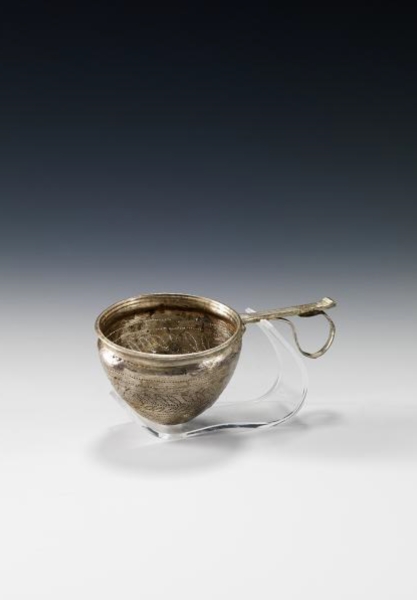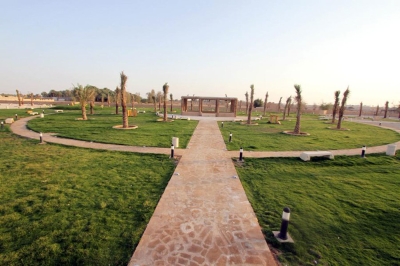
The Oval Silver Ladle is a small ladle made of silver shaped like an oval bowl. It was discovered in the archaeological Qaryat al-Faw, located southeast of Wadi ad-Dawasir Governorate in Riyadh Province, Kingdom of Saudi Arabia.
Description of the ladle
The silver ladle has a pointed base, an inward-curving shoulder, and a neck that stands on the shoulder with a slight outward tilt. On its outer surface, below the shoulder, there are two parallel lines encircling the body of the ladle, each forming a sequence of recessed horizontal perforations. Below these two lines, there is an engraved depiction of a tree branch extending horizontally with leaves on both sides and encircling the perimeter of the ladle’s bowl.
Dimensions of the ladle
Opening diameter: Seven cm
Handle length: 5.5 cm.
Height: 5.5 cm.
History of the ladle
The silver ladle dates back to the period between the third century BCE and the third century CE. It was used as part of tableware.
The ladle is preserved at the Museum of the Department of Archaeology at King Saud University in Riyadh and is registered under the number 39 F 16. The discovery of the ladle is among the results of archaeological survey and excavation efforts conducted by the antiquities and museums sector in Saudi Arabia over the years, as well as the findings of Saudi archaeologists, scientific expeditions, and specialized research teams.
The ladle at the Louvre Museum
The silver ladle is one of the artifacts selected to participate in the Saudi Archaeological Masterpieces Through the Ages Exhibition, held at the Louvre Museum in the French capital, Paris, in 2010. The exhibition included three hundred pieces made of various materials spanning different periods. These are original artifacts from various regions of Saudi Arabia, categorized chronologically into three groups: pieces from prehistoric periods, pieces from pre-Islamic periods, and pieces from Islamic periods.
Significance of the ladle
The beauty of the ladle is embodied in its executed simplicity of design, as the artistic lines of this ladle reflect a high level of craftsmanship and refined taste. The artist carefully selected botanical decorative elements to embellish the vessel, indicating that the economic prosperity of the archaeological Qaryat al-Faw played a direct role in the early urbanization of the societies that inhabited the region.
Related quizzes
Related articles

